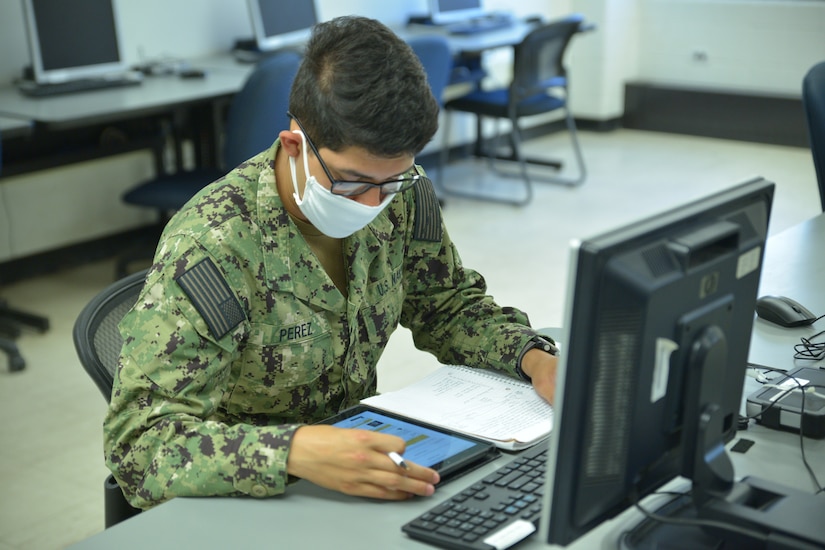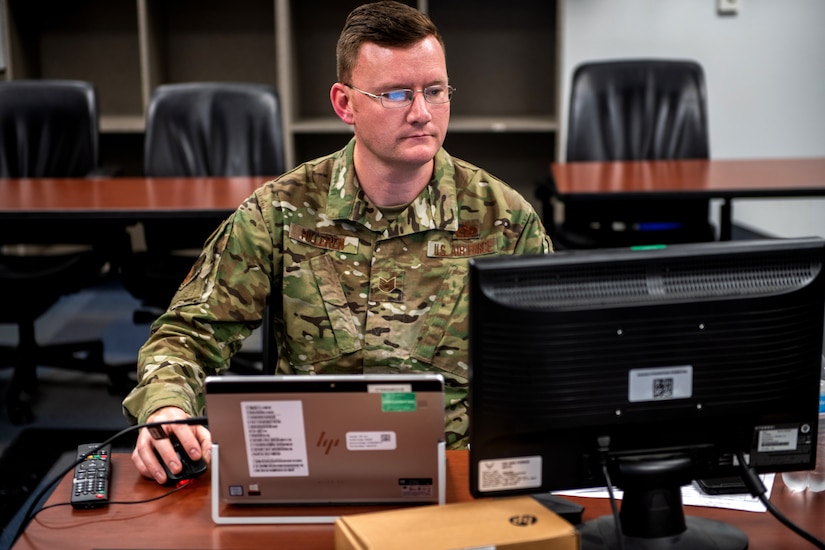Aug. 26, 2020 | , DOD News
Defense Department leaders in the fields of training and education discussed reform efforts the department is pursuing to more effectively and efficiently deliver various types of learning to its uniformed and civilian personnel.

Fred Drummond, deputy assistant secretary of defense for force education and training; Lora Muchmore, director of the Defense Business Systems Directorate, Office of the Chief Management Officer; Jim Seacord, acting director of the Human Capital Management Office, Office of the Under Secretary of Defense for Intelligence; and, Amy Rogers, chief learning officer for the civilian workforce, Office of the Assistant Secretary of Defense for Personnel and Readiness, spoke today at a National Training and Simulation Association webinar on "Transforming DOD's Learning Infrastructure."
Muchmore said that the most critical element in designing a training or education system is to first determine the desired outcome and how that outcome contributes to the mission and readiness of the department.
Once the outcome is determined, the next step is to determine which training or education delivery system is most effective at achieving the desired performance metrics, she said, adding that the performance metrics have to be operationally defined.

However, effectiveness has to be balanced with training time and investment of dollars in learning technologies, so there's a trade-space involved in the process.
Other factors to consider besides learning technologies are the development of common languages and data standards across the department, ease of access and availability of learning systems, workforce culture and policies, Muchmore said.
Seacord said the culture shift has to involve everyone thinking about the DOD mission and how what they're doing can further that mission. A soldier, sailor, airman, Marine, civilian and contractor are all on one team and it takes an open mind to break out of the traditional parochialism mindset.
Rogers said many department personnel are not aware of the training and developmental opportunities that are available to them that would further develop a skilled and ready workforce.

Training and education opportunities should reflect competencies needed not just for the current mission but for the future missions, she said.
A good idea is to collaborate and borrow from training and education that has proven effective and innovative, Rogers said. It should not be us versus them attitude.
Drummond emphasized the interoperability of training and education systems across all organizations within the department. He said they must all share the same languages and data standards so that interoperability is seamless.
Drummond, Rogers, Seacord and Muchmore are all members of the executive steering committee for the department's training and education reform effort, known as Enterprise Digital Learning Modernization.






No comments:
Post a Comment